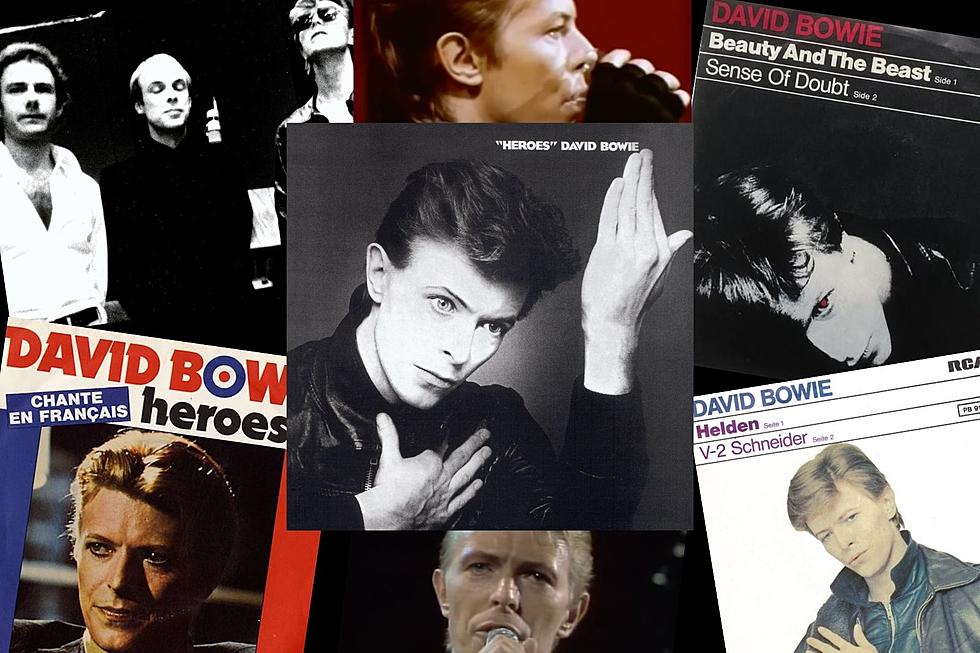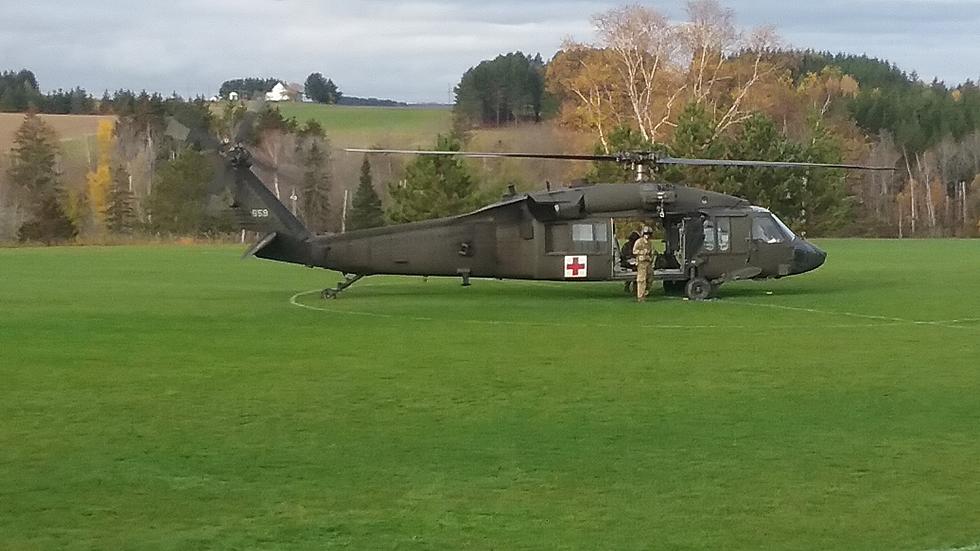
David Bowie’s ‘Heroes': A Track-by-Track Guide
In some ways, David Bowie embraced continuity for his 12th album, 1977's "Heroes."
Arriving as the second installment in what became known as his Berlin Trilogy, "Heroes" utilized the talents of Brian Eno and Tony Visconti, just like on the first LP, Low. Along with guitarist Carlos Alomar, bassist George Murray and drummer Dennis Davis, Bowie maintained a similar sequencing structure: the more mainstream songs on Side One with mostly instrumental tracks on Side Two.
But Bowie was not one to repeat himself. "Heroes" prominently featured a new guest: King Crimson guitarist Robert Fripp. "I got a phone call when I was living in New York, in July 1977," Fripp recalled in 2014. "It was Brian Eno. He said that he and David were recording in Berlin and passed me over. David said, 'Would you be interested in playing some hairy rock ’n’ roll guitar?' I said, 'Well, I haven’t really played for three years, but if you’re prepared to take a risk, so will I.' Shortly afterwards, a first-class ticket on Lufthansa arrived."
"Heroes" was also the only LP in the trilogy to be recorded exclusively in the city of Berlin, just a few hundred feet from where the wall that divided East and West Germany stood.
"Every afternoon I'd sit down at [a] desk and see three Russian Red Guards looking at us with binoculars," Visconti later remembered, "with their STEN guns over their shoulders, and the barbed wire, and I knew that there were mines buried in that wall, and that atmosphere was so provocative and so stimulating and so frightening that the band played with so much energy."
Most fans are familiar with "Heroes"' anthemic title track, but the entire album offers a comprehensive look into Bowie's creative conscious, as you'll see in the below track-by-track guide.
1. "Beauty and the Beast"
Fripp barely had enough time to set his bags down after arriving in Germany before he began work in the studio. "Eno said, 'Why don't you plug in?'" the guitarist recalled in the 2017 book David Bowie: A Life. "So I plugged into Eno's magic suitcase, his VCS3 synth-y. They hit the roll, play button and then on bar three, and sky-saw guitars and that straight into 'Beauty and the Beast.' What you hear on the record, the first track of "Heroes," is the first note I played on the session."
2. "Joe the Lion"
There are few tangible references to real life in "Heroes," but a notable exception arrives on the LP's second track. "Joe the Lion" alludes to the American performance artist Chris Burden, whose work centered on personal danger and self-inflicted harm. His best-known work, 1971's Shoot, involved Burden being shot in the arm by his assistant at point-blank range. In the song, Bowie references another piece, 1973's Trans-fixed, in which Burden was crucified on the hood of a Volkswagen Beetle. "Nail me to my car, and I'll tell you who you are," Bowie sings.
3. "Heroes"
The title track to "Heroes" began humbly. "I had no melody, so I only sang the lines I'd written for four or five bars at a time," he told The Observer in 1977. "Having sung one line, I'd take a breath and do the same thing again, and so on to the end. I never knew the complete melody until I'd finished the song and played the whole thing back." The inspiration for the song's lovers "by the wall" came from in-house: Bowie had seen Visconti, who was married at the time, kiss backing singer Antonia Maass as he looked out the studio window toward the Berlin Wall. Bowie kept his friend's secret and painted a lyrical picture of two unrequited lovers that became, over time, one of rock's most-loved anthems of hope.
4. "Sons of the Silent Age"
"Sons of the Silent Age" sets itself apart from the rest of the album: It's the only song written before the recording sessions began. Bowie viewed the album as a conglomerate of whatever he and his collaborators spontaneously came up with. "There was no reason why the album should have been called "Heroes,"" he told NME. "It could have been called The Sons of Silent Ages. It was just a collection of stuff that I and Eno and Fripp had put together."
5. "Blackout"
By his own admission, Bowie chose to work exclusively in Berlin, in part, as an attempt to set himself on the path to recovery from his drug habit. But he wound up exchanging one dependency for another, subsequently struggling with alcohol abuse. With its references to "rotting wine," "Blackout" may have been partially inspired by this personal issue, but according to Bowie it was also in response to a major electricity blackout that occurred in New York City in July 1977. "It did indeed refer to power cuts," he said later, admitting that his memory of the period was unreliable. "I can't in all honesty say that it was the New York one, though it is entirely likely that that image locked itself in my head."
6. "V-2 Schneider"
Here's where things get weird. Like on Low, Bowie shifted to mainly instrumental tracks for the second side of "Heroes." The surprisingly accessible saxophone riff that leads Side Two, however, happened just as spontaneously as the lyrics Bowie recorded on Side One. "That was more of an idea of a sequence," he told Melody Maker in 1978. "Except we turned the riff around in the beginning, purely by accident. I started playing the sax riff on the off-beat instead of the on-beat. Halfway through I thought, ‘Oh, I’m the wrong way round,’ but we continued through. So now you get this extraordinary intro where it’s all the wrong way round – beautiful! Impossible to write that – so I stayed with that and built it up from that wrong way round."
7. "Sense of Doubt"
"Sense of Doubt" employed one of Eno's productivity solutions: Oblique Strategies cards, a deck developed by Eno and artist Peter Schmidt designed to induce creativity using prompts and phrases like "Ask your body," "Try faking it!" and "What would your closest friend do?" The sparsely arranged "Sense of Doubt" features only Bowie and Eno, who took turns drawing cards and building the song around a core riff of four descending notes. "It was like a game," Eno said in the 2008 book On Some Faraway Beach: The Life and Times of Brian Eno. "We took turns working on it; he’d do one overdub, and I’d do the next. The idea was that each was to observe his Oblique Strategy as closely as he could. And, as it turned out, they were entirely opposed to one another. Effectively mine said, 'Try to make everything as similar as possible” … and his said 'Emphasize differences.'"
8. "Moss Garden"
"Moss Garden" also came about as the result of Bowie and Eno's incidental interplay. Bowie had told Eno about a Buddhist temple in Kyoto, Japan, known for its luxurious moss gardens, and the pair set off to work. "I was just playing around with this chord sequence on the Yamaha synthesizer," Eno told NME in 1977. "And I said, ‘Give us a shout when you think it’s long enough,' you know, and sort of carried on. And then David looked at the clock and said, ‘Yeah, that’ll probably do,' and we stopped. And, on the record, that’s exactly where the piece ends. I find this very, very curious. It’s so random somehow."
9. "Neukoln"
Bowie became acutely aware of Berlin's complexity while living in the city: It was blooming with art and youth in some sense, but it was still recovering from World War II and dealing with deeply rooted issues of immigration and poverty — all with a wall running down the center of it. "[Berlin] is a city made up of bars for sad disillusioned people to get drunk in," Bowie told Melody Maker in 1977. "One never knows how long it is going to remain there. One fancies that it is going very fast. That's one of the reasons, sure, why I was attracted to the city. There's a track on the album called 'Neukoln,' and that's the area of Berlin where the Turks are shackled in bad conditions. [Bowie misspelled the neighborhood's name with one "L" instead of two.] They're very much an isolated community. It's very sad. Very very sad. And that kind of reality obviously contributed to the mood on both Low and "Heroes."
10. "The Secret Life of Arabia"
"The Secret Life of Arabia," which features a cowriting credit for guitarist Carlos Alomar, was another act of improvisation on the album. "It’s hard to believe that ‘Beauty and the Beast’ to ‘The Secret Life of Arabia’ were just backing tracks arranged on the spot with no knowledge of titles, vocal melodies or lyrics," Visconti said in the liner notes to the 2017 box set A New Career in a New Town (1977–1982). "Somehow it was mutually sensed where singing would and wouldn’t be. Emotional music textures, not songs, were being recorded."
David Bowie Albums Ranked
More From










